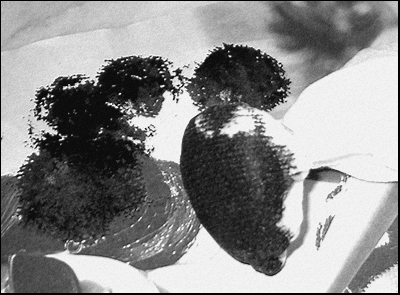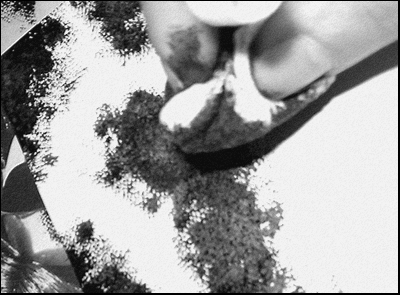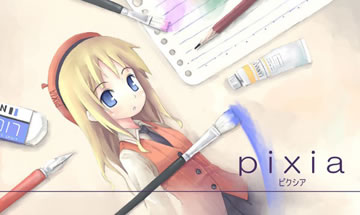Joining |
Submitting |
About Us |
Featured Articles |
Summer 2012 Contest |
Live Sessions Screentones Resource CompilationWhat are they and where do I find them?
Screentones Resource CompilationWhat are they and where do I find them?by
bakenekogirl
From the original article
Screentone or are you...? by
bakenekogirl!
What are Screentones?

"
Screentone (or Halftone) is a technique for
applying textures and shades to drawings, used as an alternative to hatching. In the conventional process, patterns are transferred to paper from preprinted sheets, but the technique is also simulated in computer graphics. It is also known by the common brand names Zip-A-Tone
(1937, now defunct), Chart-Pak
(1949), and Letratone
(1966, from Letraset)."

A traditional screentone sheet consists of a flexible transparent backing, the printed texture, and a wax adhesive layer. The sheet is applied to the paper, adhesive down, and rubbed with a stylus on the backing side. The backing is then peeled off, leaving the ink adhered to the paper where pressure was applied. A screentone saves an artist's time by allowing quick application of textures to line art where a hand-shaded area would not be reproduced in a timely or acceptable manner. Much like halftone, the size and spacing of black dots, lines, or hatches determine how light or dark an area will appear. Visual artists need to take into account how much an image will be reduced when prepared for publication when choosing the pitch of a screentone.

Screentones can also be layered to produce interference patterns such as
moire effects,
or to simulate multiple sources of shadow in an image. Different styles of screentone exist, variously intended to depict clothing, clouds, emotions, backgrounds, gradients and even objects such as trees. While the sheets are most commonly produced with black ink, there are also varieties in solid and patterned colors.Screentones can also be modified by lightly scratching the backing with an X-Acto blade to produce starbursts and other special effects.

Screentones are widely used by illustrators and artists, especially for cartoons and advertising. Use of the original medium has been declining since the advent of graphics software and desktop publishing, but it is still used, for example, by some Japanese Manga authors
(Deleter and Maxon are common names within this specialty). While computer graphics software provides a variety of alternatives to screentone, its appearance is still frequently simulated, to achieve consistency with earlier work or avoid the stereotypical appearance of computer-generated images. It is sometimes accomplished by
scanning actual screentone sheets, but original vector or bitmap screen patterns are also used.
Digital Advances in Toning
 Digital halftoning
Digital halftoning has been replacing photographic halftoning since the 1970s when "electronic dot generators" were developed for the film recorder units linked to color drum scanners made by companies such as
Crosfield Electronics, Hell and Linotype-Paul. In the 1980s halftoning became available in the new generation of imagesetter film and paper recorders that had been developed from earlier 'laser typesetters'. Unlike pure scanners or pure typesetters, imagesetters could generate all the elements in a page including type, photographs and other graphic objects. Early examples were the widely used
Linotype Linotronic 300 and 100 introduced in 1984, which were also the first to offer
PostScript RIPs in 1985.
Early laser printers from the late 1970s onward could also generate halftones but their original
300 dpi resolution limited the screen ruling to about
65 lpi. This was improved as higher resolutions of
600 dpi and above, and dithering techniques, were introduced. All halftoning uses a
high frequency/low frequency dichotomy. In photographic halftoning, the low frequency attribute is a local area of the output image designated a halftone cell. Each equal-sized cell relates to a corresponding area (size and location) of the continuous-tone input image. Within each cell, the high frequency attribute is a centered variable-sized halftone dot composed of ink or toner. The ratio of the inked area to the non-inked area of the output cell corresponds to the luminance or graylevel of the input cell. From a suitable distance, the human eye averages both the high frequency apparent gray level approximated by the ratio within the cell and the low frequency apparent changes in gray level between adjacent equally-spaced cells and centered dots.

Digital halftoning uses a
raster image or bitmap within which each monochrome picture element or pixel may be on or off, ink or no ink. Consequently, to emulate the photographic halftone cell, the digital halftone cell must contain groups of
monochrome pixels within the same-sized cell area. The fixed location and size of these monochrome pixels compromises the high frequency/low frequency dichotomy of the photographic halftone method. Clustered multi-pixel dots cannot "grow" incrementally but in jumps of one whole pixel. In addition, the placement of that pixel is slightly off-center. To minimize this compromise, the digital halftone monochrome pixels must be quite small,
numbering from 600 to 2,540, or more, pixels per inch. However, digital image processing has also enabled more sophisticated dithering algorithms to decide which pixels to turn black or white, some of which yield better results than digital halftoning.
Typical Resolution of Screentones
The resolution of a halftone screen is measured in
lines per inch (lpi).
This is the number of lines of dots in one inch, measured parallel with the screen's angle. Known as the
screen ruling, the resolution of a screen is written either with the suffix
lpi or a
hash mark; for example, "150 lpi" or "150#." The higher the pixel resolution of a source file, the greater the detail that can be reproduced. However, such increase also requires a corresponding increase in screen ruling or the output will suffer from posterization. Therefore file resolution is matched to the output resolution.

Screen Printing 45–65 lpi

Laser Printer (300dpi) 65 lpi

Laser Printer (600dpi) 85–105 lpi

Offset Press (newsprint paper) 85 lpi

Offset Press (coated paper) 85–185 lpi
 Wikipedia original context
Wikipedia original context More explanations
More explanationsBuying Tones on the Internet
Software Photoshop
Photoshop ($) >
see tutorial and brush Manga Studio
Manga Studio ($)
Manga Studio is aimed at desiging manga. The interface of Manga Studio is located in the line of Illustrator. The software multiplies the tool palettes. He offers many features: management layers, converting bitmap drawings in vector mode, multiple tools, brushes or effects, a wide selection of models of pages, and several features to work faster (scripts, use of several instances of the same design)...
 Powertone
Powertone ($ - Japanese Site)
Powertone is made by the same company that makes
Manga Studio. It is a filter plug-in for
Photoshop and
ComicStudio 2.0, so you can tone your page in Photoshop. Though the tone is not vector base, if you mess up, you have to retone it all over again.
Powertone only work in Japanese OS. To use it, either you have a Japanese computer, or set your computer to Japanese mode.

If you own
Manga Studio 3 EX, the powertone comes free as bonus plug-in. (This is located inside install disk 3, and the name is changed to
computone in the English version.) The free computone only works as filter under
Manga Studio, and it can't work in
Photoshop. It's different from the tone inside Manga Studio tone menu. In extra computone filter, you can set the tone to white ink color instead of only black.
Screentones ready for use
Here is a partial list of traditional screentone retailers.
 Letraset Manga
Letraset Manga ($) > (This is an ideal introduction for Screentone novices! CD and print are available.)
 antarctic-press.com
antarctic-press.com ($)
 AKA: Akadot
AKA: Akadot ($)
 Maxon
Maxon ( $ - Japanese Site )
 Deleter
Deleter ( $ - Japanese Site )
 Chotto.art.coocan
Chotto.art.coocan Aya's tone book
Aya's tone book Screentones
Screentones Computer screentones
Computer screentones Japanese Tones
Japanese Tones SCOF Kurse
SCOF Kurse Fillamanga
Fillamanga  Milano Aoyama
Milano Aoyama Photoshop patterns
Photoshop patterns  Yokohama Patterns
Yokohama Patterns  Screen Tones
Screen Tones  Screentones Depot
Screentones Depot Mandichan
Mandichan
Other Traditional Methods

A sheet of paper, pencil, scanner and let's go! With a little imagination, you can create your own screentones!
White Ink
 Gauze
Gauze



Pens, Nibs, Black Ink, White Ink, and Sturdy Paper. Sponges, gauze, lace, grass, fabric! Grab anything to create your own tones!
 How-to: Traditional Mesh-Hatching
How-to: Traditional Mesh-Hatching How-to: Traditional Chain-Hatching
How-to: Traditional Chain-Hatching How-to: Traditional Gauze Effect
How-to: Traditional Gauze EffectThe sky is the limit!
Enjoy!
 Written by: bakenekogirl
Written by: bakenekogirl
Original Article here. Original has pictures!
Edited by HeyTayHolt
2/22/2010










![[ai adopt] cute orca](https://images-wixmp-ed30a86b8c4ca887773594c2.wixmp.com/f/ddc18696-4f6c-45cb-9f33-d86c938029f4/dgrw3yy-f7f65673-3075-4909-a8df-c245b85f2e05.jpg/v1/fill/w_350,h_350,q_70,strp/_ai_adopt__cute_orca_by_1dollaradopts_dgrw3yy-350t.jpg?token=eyJ0eXAiOiJKV1QiLCJhbGciOiJIUzI1NiJ9.eyJzdWIiOiJ1cm46YXBwOjdlMGQxODg5ODIyNjQzNzNhNWYwZDQxNWVhMGQyNmUwIiwiaXNzIjoidXJuOmFwcDo3ZTBkMTg4OTgyMjY0MzczYTVmMGQ0MTVlYTBkMjZlMCIsIm9iaiI6W1t7ImhlaWdodCI6Ijw9MTAyNCIsInBhdGgiOiJcL2ZcL2RkYzE4Njk2LTRmNmMtNDVjYi05ZjMzLWQ4NmM5MzgwMjlmNFwvZGdydzN5eS1mN2Y2NTY3My0zMDc1LTQ5MDktYThkZi1jMjQ1Yjg1ZjJlMDUuanBnIiwid2lkdGgiOiI8PTEwMjQifV1dLCJhdWQiOlsidXJuOnNlcnZpY2U6aW1hZ2Uub3BlcmF0aW9ucyJdfQ.zngARLN4yL8QCUnYggBAApj1qB62u8Pblg_JDIgTuwk)